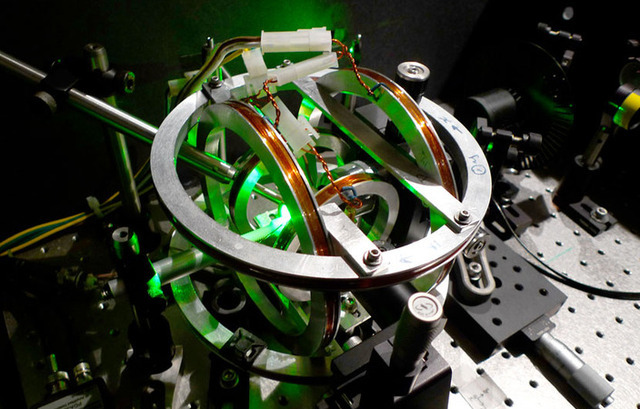
Scientist show how to make atoms swing to the beat (frequency).

In his internship project at Microsoft Applied Sciences Group, Jinha Lee developed the See Through 3D Desktop --- a 3D hardware/software

LG has begun mass production of the world’s first flexible, plastic e-ink display, ExtremeTech reports. The display has a resolution of 1024 x 768 and

(PhysOrg.com) -- UCLA researchers are now able to peer deep within the world

In the continual quest for better thermoelectric materials -- which convert heat into electricity and vice versa -- researchers have identified a liquid-like compound whose properties give it the potential to be even more efficient than traditional thermoelectrics.

The tiny, high-speed computer chips found in every modern electronic device bear little resemblance to their bulky, slow ancestors of decades ago. Different materials, new designs and new production techniques have ensured successive generations of integrated circuits offer ever more performance at lower cost.

Scientists have provided the first experimental determination of the pathways by which electrical charge is transported from molecule-to-molecule in an organic thin film. These results also show how such organic films can be chemically modified to improve conductance for superior organic electronics.

Scientists are one step closer to making more complex microscopic biological machines, following improvements in the way that they can

Researchers have found a way to create temporary holes in the membranes of live cells using a standard inkjet printer. Creating temporary pores allow researchers to put molecules inside of cells that wouldn

Researchers have developed a unique way to create full-color holograms with the aid of surface plasmons.


Memorial Sloan-Kettering Cancer Center (MSKCC) and IBM have announced an agreement to collaborate on the development of a powerful tool built upon IBM

Printing three dimensional objects with incredibly fine details is now possible using "two-photon lithography". With this technology, tiny structures on a nanometer scale can be fabricated. Researchers at the Vienna University of Technology (TU Vienna) have now made a major breakthrough in speeding up this printing technique: The high-precision-3D-printer at TU Vienna is orders of magnitude faster than similar devices (see video). This opens up completely new areas of application, such as in medicine.

(PhysOrg.com) -- A group of scientists led by researchers from the University of Rochester and North Carolina State University have for the first time sent a message using a beam of neutrinos – nearly massless particles that travel at almost the speed of light. The message was sent through 240 meters of stone and said simply, "Neutrino."

Blisteringly fast Internet speeds, more robust connections and a big increase in network capacity at little extra cost, even in rural areas? It